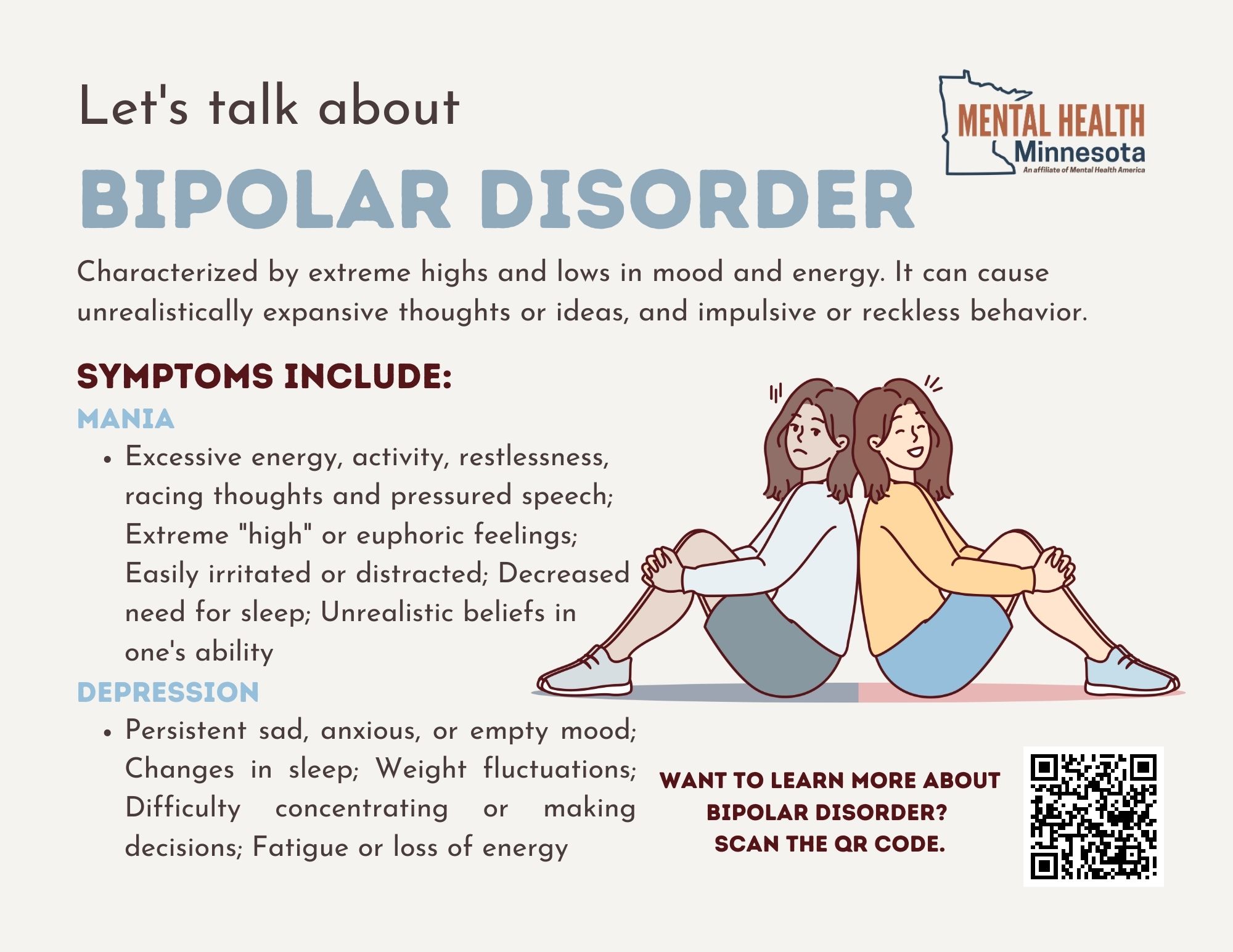Have you ever heard of bipolar disorder? It may also be called “manic depression,” but these names all refer to the same psychological problem. It affects a person’s mood, causing it to fluctuate between extreme happiness (or excitement) and extreme sadness. It’s like riding a roller coaster, with emotions going up and down, making them very unstable.
This situation is hard on people and affects learning, work, and interactions with others. Today, we’re going to talk about what bipolar disorder is, how it develops, how it manifests, and how to address it.
What is bipolar disorder?
Simply put, bipolar disorder is when a person’s mood fluctuates between two extremes:
One state is euphoria, called “mania.” During this state, a person may feel particularly energized, talk a lot, act impulsively, and sleep very little without feeling tired. The other state is depression, also known as “depressive.” During this time, people feel powerless, can’t get excited about anything, and often feel sad or hopeless.
The other state is depression, also known as “depressive.” During this time, people feel powerless, can’t get excited about anything, and often feel sad or hopeless.
These emotions cannot be controlled and can last for days or even weeks. Sometimes, a person may feel excited for days on end and then suddenly become depressed. Such erratic mood changes can have a significant impact on one’s life.
Where does it come from?
There is no definitive answer, but doctors and scientists believe several factors may contribute to this condition.
1. Genetic factors:
If someone in your family has had bipolar disorder, you are more likely to develop it than others. However, this doesn’t mean that you will definitely get it; it just means that the risk is slightly higher.
2. Changes in the Brain
Research has found that people with this condition may have an imbalance of certain chemicals in the brain, such as serotonin and dopamine. These substances send messages and help us regulate our emotions. If they are imbalanced, it can lead to mood swings.
Additionally, some people may have different brain structures than average, such as different sizes or levels of activity in certain areas.
3. Environmental Stress
Encountering too many stressful situations in life, such as a breakup, job loss, or the death of a loved one, can trigger the condition. If a person is genetically predisposed, these things make it easier to develop the disease.
4. Unhealthy Living Habits
For example, staying up late, an irregular diet, and a lack of exercise can make emotions more unstable. While these habits do not directly cause bipolar disorder, they can exacerbate symptoms.
What are the main symptoms?
As previously mentioned, the defining feature of this disorder is mood fluctuations between two extremes. Let’s talk about the manifestations of each state in more detail.
Manic episodes:
Some people also have “strange thoughts” at this stage, such as thinking they have special powers or are being followed.
Depressive episodes:
These are not momentary bad moods, but rather, they last for days or even weeks at a time.
Can this disease be cured?
The good news is that, although it is a long-term illness, it is possible to control the symptoms and return to a normal life with proper treatment.
Treatment consists of three main areas: medication, counseling, and support systems.
1. Medication:
This is the most basic and important part. Depending on the patient’s situation, the doctor will prescribe mood-stabilizing medications, such as mood stabilizers, antidepressants, or antipsychotics.
These medications can help restore the balance of chemicals in the brain and reduce mood swings. However, it is important to note that these medications must be taken according to the doctor’s advice and should not be stopped or changed at random.
2. Psychological Counseling
Psychotherapy is also important. For instance, cognitive behavioral therapy can help patients recognize their emotional patterns and adjust negative thoughts. Family therapy can help family members understand the patient and face difficulties together.
In addition, psychoeducation is crucial. Patients and their families should understand the disease so they can cooperate with treatment more effectively.
3. Social Support
The understanding and companionship of family members are very important. Support from friends and social acceptance can also encourage patients. Participating in rehabilitation groups and sharing experiences with other patients is also helpful.
Coping in Daily Life
Apart from seeing a doctor and taking medication, what else can you do in your daily life to help yourself?
Learn to recognize your emotions.
Keep track of how your mood changes from day to day to see if there is a pattern. For example, you can note whether you tend to have high or low moods at certain times of the day. This will help you prepare in advance.
✅ Keep a regular routine.
Eat and go to bed on time, and avoid staying up late. Good habits can help your brain maintain a stable mood.
Don’t isolate yourself.
Don’t carry the burden alone when things get tough. Talk to a trusted friend or seek help from a professional counselor. It’s better to talk about it than to keep it inside.
Set realistic goals.
Set small, achievable goals for yourself, such as taking a ten-minute walk every day or organizing your room. You will feel more accomplished when you achieve them.
✅ Stick to your treatment.
Even if you feel better, don’t stop taking your medication without authorization. Follow up regularly, listen to your doctor’s advice, and adjust your treatment plan slowly.
Here are some tips for family members:
If you are close to someone with bipolar disorder, the following tips may be helpful:
❤️ Have more patience and understanding.
They don’t mean to lose their temper or be emotionally unstable; they are sick. Instead of criticizing and blaming, try to put yourself in their shoes.
Encourage them to seek medical attention.
There’s no shame in going to the doctor when you’re sick. Encourage them to take their medication on time and to follow up regularly.
❤️ Protect their emotions.
Taking care of a sick person is not easy. Make sure you get enough rest and don’t tire yourself out. You can also seek professional help if necessary.
What can we do?
Many people don’t know much about this disease and may misunderstand patients, considering them “strange” or “unreasonable.” In reality, they are just sick and need more care and understanding.
As members of the community, we can do the following:
Only by working together can we create a warmer, safer living environment for patients.
Conclusion:
Although bipolar disorder may sound serious, it is not an unbeatable enemy. With active treatment, healthy habits, and sufficient support, patients can lead normal lives.
If you or someone close to you has similar symptoms, see a doctor as soon as possible. Like physical problems, mental problems are better when detected and treated early.
Let’s work together with more understanding and less prejudice to give hope to everyone struggling with their emotions.

